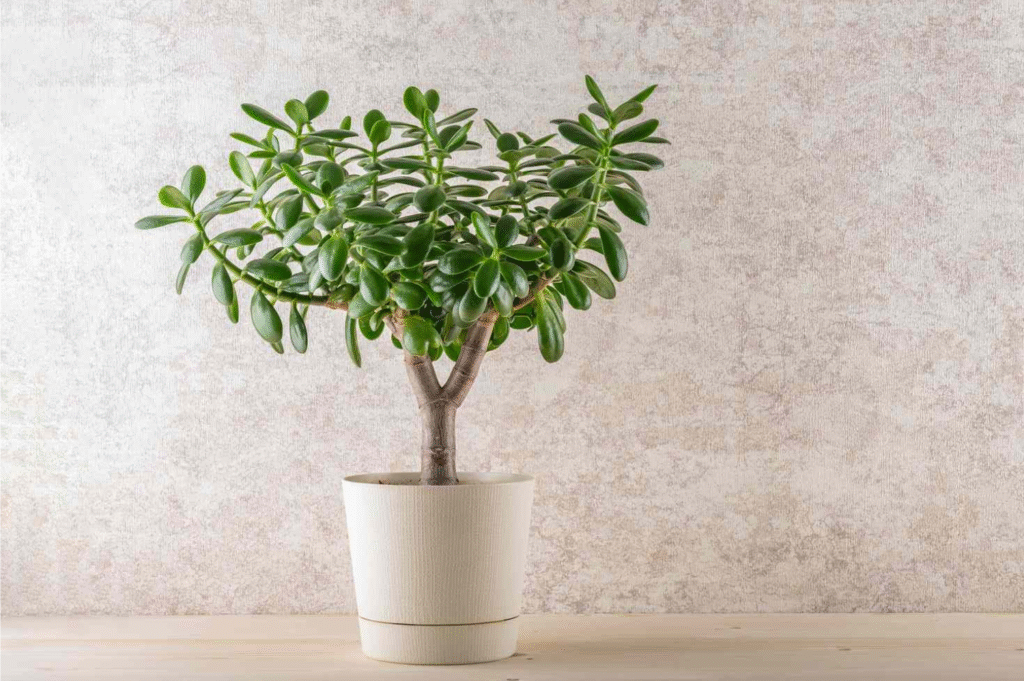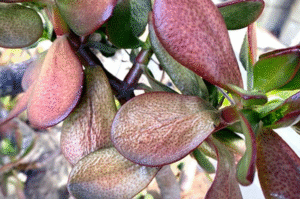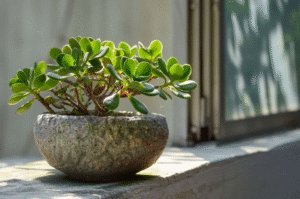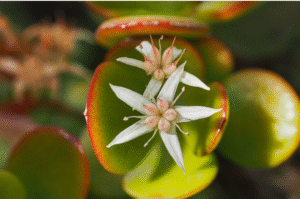Jade plants (Crassula ovata) are one of the most popular indoor succulents, known for their thick, shiny leaves and tree-like appearance. But if you’re growing one in your home or office, you might have wondered: Do jade plants like humidity? The short answer is no, they don’t need much humidity to thrive. In fact, too much humidity can sometimes do more harm than good.
In this article, we’ll break down how humidity affects jade plants, the ideal humidity range for them, common mistakes, and tips to help your jade plant flourish indoors, especially if you live in a humid or dry climate.
Understanding the Jade Plant’s Natural Habitat
Jade plants are native to South Africa and Mozambique, where the climate is warm, sunny, and dry. These regions receive low rainfall and low humidity, making jade plants well-suited to arid environments.
That means when you bring a jade plant indoors, it prefers conditions that mimic its natural habitat (bright light, dry air, and minimal water).
Ideal Humidity Range for Jade Plants
Jade plants thrive in low to moderate humidity, typically between 30% and 50%. This is the average indoor humidity level in most homes, which makes them a great fit for household environments.
If humidity rises consistently above 60%, it can create problems like:
- Fungal diseases
- Root rot
- Powdery mildew
- Soft or mushy leaves
On the other hand, extremely dry air (below 20%) over a long period may lead to leaf shriveling, although it’s rare and usually linked to underwatering, not humidity alone.
Signs Your Jade Plant Is Affected by Humidity
Too Much Humidity
- Leaves appear soft, limp, or mushy
- Presence of mold or mildew on soil or stems
- Soil remains constantly wet
- Black or brown spots on leaves
Too Little Humidity (Rare)
- Shriveled leaves
- Soil dries too quickly
- Slower growth
- Leaf drop (only if paired with underwatering)
In most homes, you won’t need to adjust humidity unless you live in an area with tropical moisture levels or use humidifiers indoors.
Jade Plants in Humid Climates – What to Do?
If you live in a high-humidity region (like coastal or tropical zones), your jade plant might need a bit of extra care. Here’s how to keep it healthy:
1- Use a Fast-Draining Potting Mix
Use a succulent or cactus soil mix that includes perlite or coarse sand. This prevents moisture from staying in the soil too long.
2- Choose the Right Pot
Always use a pot with drainage holes. Avoid ceramic pots without drainage, as they trap water and increase humidity around the roots.
3- Provide Good Air Circulation
Keep your jade plant in a well-ventilated space. A fan, open window, or air conditioner can help reduce air moisture levels.
4- Avoid Misting
Jade plants don’t benefit from misting. In fact, misting increases surface moisture, which can lead to fungal issues.
5- Water Less Frequently
In humid environments, water the soil only when it is completely dry, usually every 2–3 weeks. Stick your finger an inch into the soil. If it’s still damp, wait.
Can You Grow Jade Plants in Bathrooms?
Bathrooms are usually the most humid rooms in a house. Should you place your jade plant there?
Probably not. While the bright lighting might be helpful (if there’s a window), the constant steam and high humidity levels from showers can increase the risk of fungal diseases.
Unless your bathroom has excellent airflow and stays below 50% humidity, it’s safer to keep your jade plant in a drier room, like a sunny living room or bedroom.
Jade Plants and Winter Humidity
During winter, indoor humidity tends to drop due to heaters and dry air. This is not a problem for jade plants. They do quite well in these conditions.
However, lower humidity means the soil dries faster. So, make sure you check the soil moisture regularly and adjust your watering schedule accordingly.
Pro Tips to Maintain the Right Environment
- Invest in a Hygrometer: A small humidity meter helps you monitor the exact air moisture level around your plant.
- Avoid Pebble Trays or Humidifiers: These tools are useful for tropical plants, not succulents like jade.
- Group Plants with Caution: Grouping plants can raise humidity. If you do this, ensure there’s enough airflow between them.
Final Thoughts:
In conclusion, jade plants prefer dry air and do not like high humidity. Their succulent nature means they store water in their leaves, making them perfect for low-humidity indoor environments.
If you give your jade plant:
- Bright indirect light
- Dry, well-draining soil
- Minimal humidity and proper air circulation
…it will reward you with years of healthy, vibrant growth.
So, if you’re in doubt, remember this rule of thumb: Less humidity is better than too much for jade plants.






